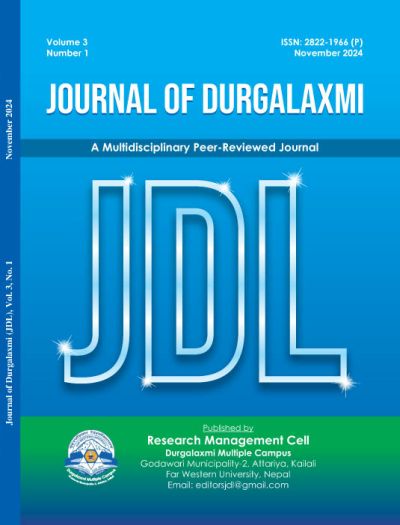Transforming Rural Economies: The Socioeconomic Impact of Microfinance in Kailali District, Nepal
DOI:
https://doi.org/10.3126/jdl.v3i1.73846Keywords:
microfinance, Kailali district, Nepal, sociology-economic impact, rural poorAbstract
Microfinance has been widely promoted as a strategy for poverty alleviation in developing countries. This mixed-methods study evaluates the socioeconomic impact of microfinance services on the rural poor in Kailali district, Nepal. We surveyed 150 microfinance beneficiaries from three major microfinance institutions and conducted in-depth interviews and focus group discussions. The findings indicate that access to microfinance leads to positive socioeconomic outcomes, including increased income, asset accumulation, improved food security, and better education for children. However, the impact varies across different types of loans, geographic regions, and occupations. The study also reveals challenges such as over-indebtedness and repayment stress among some participants. These findings have important implications for microfinance policy and practice in Nepal and similar contexts.
Downloads
Downloads
Published
How to Cite
Issue
Section
License

This work is licensed under a Creative Commons Attribution-NonCommercial 4.0 International License.
CC BY-NC: This license allows reusers to distribute, remix, adapt, and build upon the material in any medium or format for noncommercial purposes only, and only so long as attribution is given to the creator.




